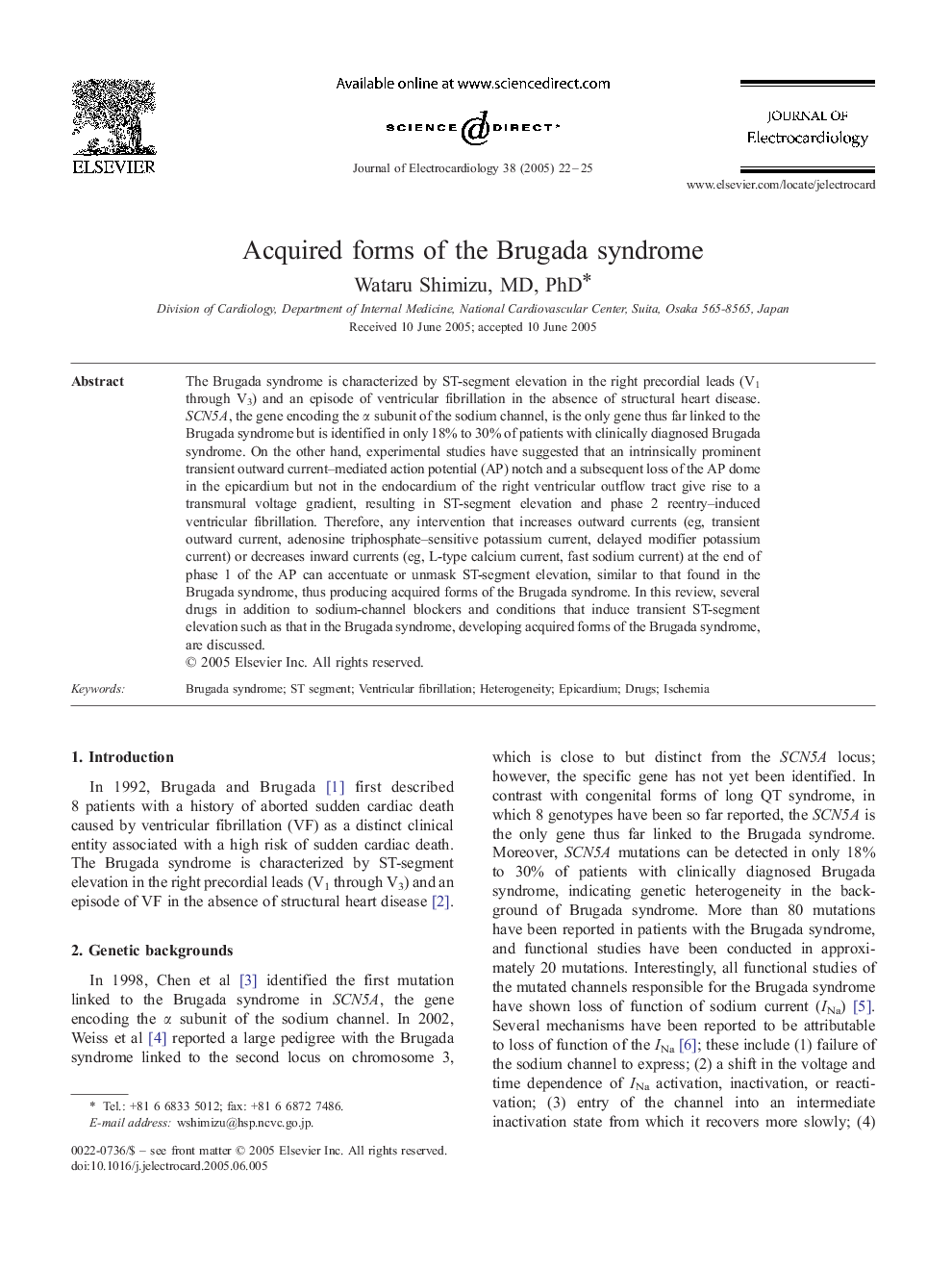| Article ID | Journal | Published Year | Pages | File Type |
|---|---|---|---|---|
| 9171643 | Journal of Electrocardiology | 2005 | 4 Pages |
Abstract
The Brugada syndrome is characterized by ST-segment elevation in the right precordial leads (V1 through V3) and an episode of ventricular fibrillation in the absence of structural heart disease. SCN5A, the gene encoding the α subunit of the sodium channel, is the only gene thus far linked to the Brugada syndrome but is identified in only 18% to 30% of patients with clinically diagnosed Brugada syndrome. On the other hand, experimental studies have suggested that an intrinsically prominent transient outward current-mediated action potential (AP) notch and a subsequent loss of the AP dome in the epicardium but not in the endocardium of the right ventricular outflow tract give rise to a transmural voltage gradient, resulting in ST-segment elevation and phase 2 reentry-induced ventricular fibrillation. Therefore, any intervention that increases outward currents (eg, transient outward current, adenosine triphosphate-sensitive potassium current, delayed modifier potassium current) or decreases inward currents (eg, L-type calcium current, fast sodium current) at the end of phase 1 of the AP can accentuate or unmask ST-segment elevation, similar to that found in the Brugada syndrome, thus producing acquired forms of the Brugada syndrome. In this review, several drugs in addition to sodium-channel blockers and conditions that induce transient ST-segment elevation such as that in the Brugada syndrome, developing acquired forms of the Brugada syndrome, are discussed.
Related Topics
Health Sciences
Medicine and Dentistry
Cardiology and Cardiovascular Medicine
Authors
Wataru MD, PhD,
